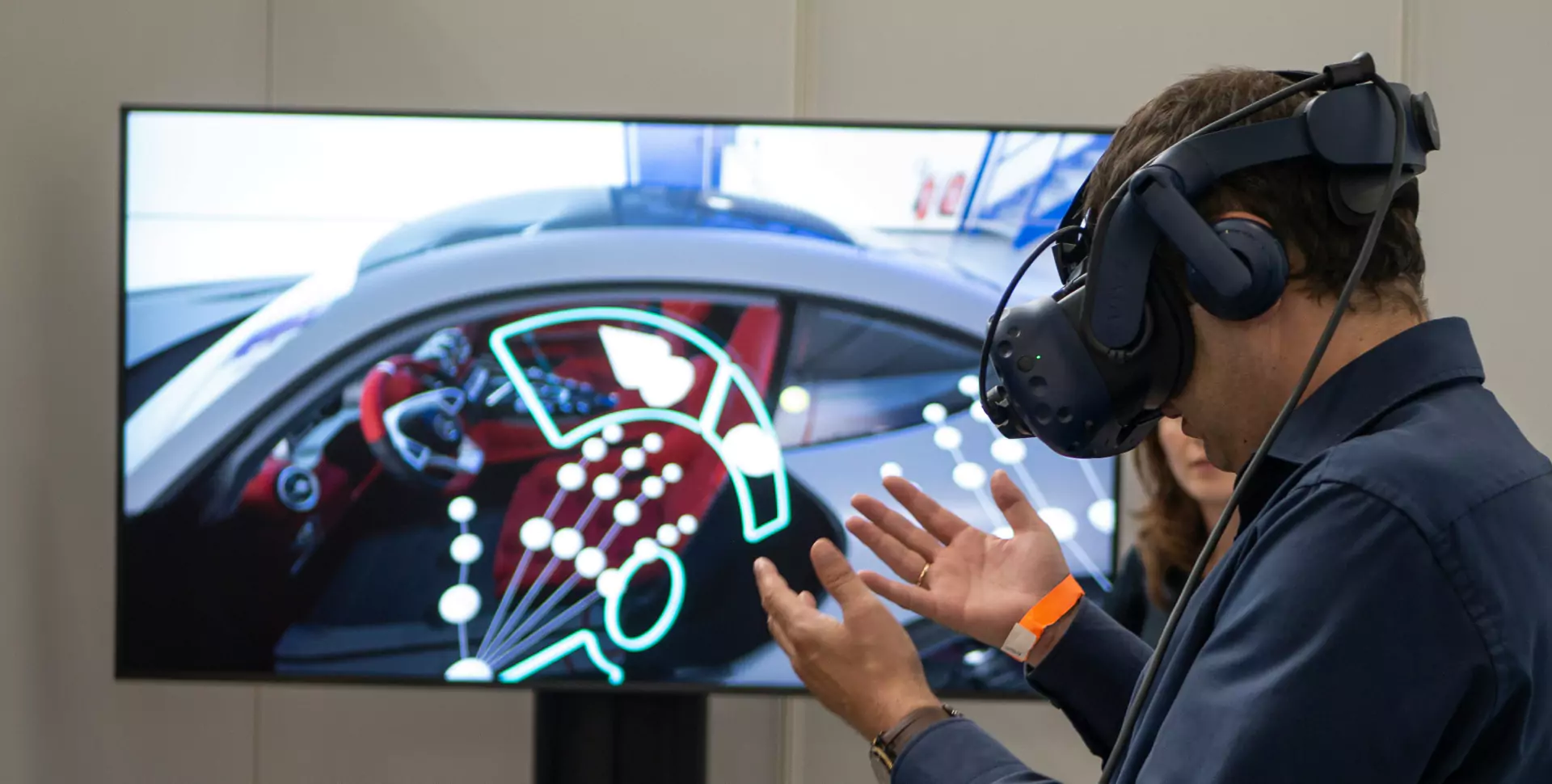Introduction
In the mining industry, new recruits undergo thorough training to acquire expertise in their role as haul truck operators. How can we leverage modern technology like Virtual Reality (VR) and haptic technology instead of traditional training methods to revolutionize the training and education modules in the construction and mining industry? Haul truck operators are required to conduct a pre-operational (pre-op) inspection before operating the truck. This includes, inspecting whether all components are in good working condition and also checking the truck’s surrounding area for safety. For this, we have developed a VR Pre-op Inspection Training Simulator using Haptic Gloves to grant repeatable pre-op inspection training to improve the operational efficiency of the recruit, reduce the overall training time, and train recruits at their own pace in a safe environment. While VR provides higher data visualization abilities, improves problem-solving skills, and enhances spatial awareness, the haptic gloves allow new recruits to feel and more deeply understand the truck they will be operating.

Challenge
During our research (focus group sessions, online Zoom meetings, and site visits), the subject matter experts explained that the traditional training methods come with certain issues that need to be rectified. These issues are responsible for the new recruits not being able to perform a pre-op inspection like a professional truck operator. The lack of visual elements in the classroom session impacts engagement with the training module. This results in less knowledge transfer and even lesser knowledge retention among recruits. Recruits neglect reading the truck manuals as they are a few hundred to a few thousand pages long. On the mine site, larger groups (5-10 people) put a strain on both the trainer and the resources. Taking these trucks out of operation for training recruits and interrupting the mining process incurs a significant loss of time and money for the company. Oftentimes, the trainer and recruits can be in adverse weather conditions like extreme heat 120F or extreme cold -60F for multiple days of training. This results in recruits spending less time on-site with the truck and getting less hands-on experience.


Solution
In “Komatsu Haptics,” the recruits start their training at the virtual safety dojo level by putting on the virtual safety gear and selecting the machine to perform the pre-op inspection. They are then guided through a tutorial session that educates them about various features and VR interactions within the experience. In the virtual mine site, the haul truck is divided into 20 sub-zones. The recruits have to inspect each sub-zone with the help of a virtual checklist that provides them with a list of specific component names to inspect within each zone of the truck. After inspecting, they have to update the condition of the component in the checklist. Recognizing the haul truck's size and physical space limitations in training facilities, recruits use the teleportation feature to explore the truck in all zones and sides. Once the inspection in the virtual mine is complete, the recruits go through a quiz level, where they answer questions related to the pre-op inspection they performed. This helps the trainers gauge their progress and decide whether someone is fit to go on-site or needs extra training.



Testing and Result
We conducted three usability tests, one after each phase of the project, to determine the project's progress and identify improvement opportunities. These tests included a total of 25+ stakeholders comprising mining company representatives (from Komatsu America, Komatsu Japan, and Komatsu Germany) and their truck operator trainers. After thorough testing and evaluation by the stakeholders, a unanimous agreement was reached that the project successfully replicated the pre-op inspection process for haul trucks. Stakeholders and subject matter experts emphasized that adopting this VR training platform would provide substantial advantages in training new recruits. Stakeholder and expert feedback included statements like "The project has effectively captured the size and scale of the trucks and machines," "This will help us keep people out of harm’s way and yet find skilled individuals," and "A substantial measure of effectiveness between new and seasoned operators."
